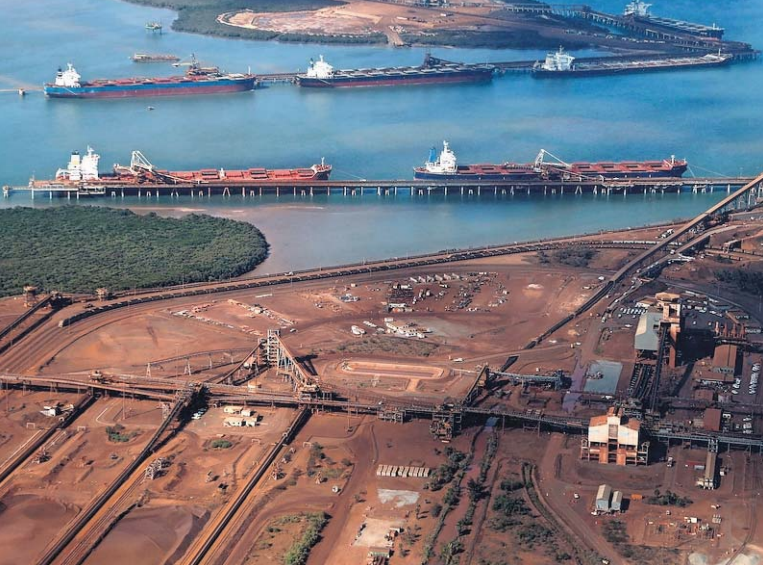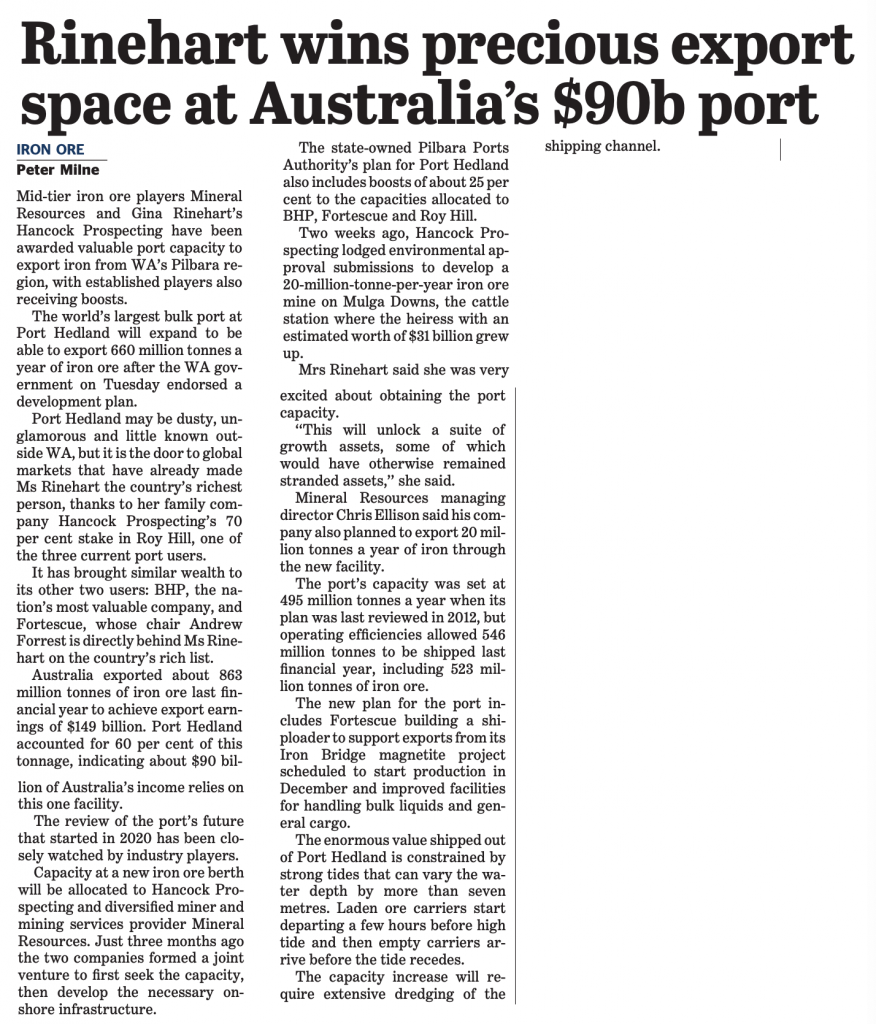

Mid-tier iron ore players Mineral Resources and Gina Rinehart’s Hancock Prospecting have been awarded valuable port capacity to export iron from WA’s Pilbara region, with established players also receiving boosts.
The world’s largest bulk port at Port Hedland will expand to be able to export 660 million tonnes a year of iron ore after the WA government on Tuesday endorsed a development plan.
Port Hedland may be dusty, unglamorous and little known outside WA, but it is the door to global markets that have already made Ms Rinehart the country’s richest person, thanks to her family company Hancock Prospecting’s 70 per cent stake in Roy Hill, one of the three current port users.
It has brought similar wealth to its other two users: BHP, the nation’s most valuable company, and Fortescue, whose chair Andrew Forrest is directly behind Ms Rinehart on the country’s rich list.
Australia exported about 863 million tonnes of iron ore last financial year to achieve export earnings of $149 billion. Port Hedland accounted for 60 per cent of this tonnage, indicating about $90 billion of Australia’s income relies on this one facility.
The review of the port’s future that started in 2020 has been closely watched by industry players.
Capacity at a new iron ore berth will be allocated to Hancock Prospecting and diversified miner and mining services provider Mineral Resources. Just three months ago the two companies formed a joint venture to first seek the capacity, then develop the necessary onshore infrastructure.
The state-owned Pilbara Ports Authority’s plan for Port Hedland also includes boosts of about 25 per cent to the capacities allocated to BHP, Fortescue and Roy Hill.
Two weeks ago, Hancock Prospecting lodged environmental approval submissions to develop a 20-million-tonne-per-year iron ore mine on Mulga Downs, the cattle station where the heiress with an estimated worth of $31 billion grew up.
Mrs Rinehart said she was very excited about obtaining the port capacity.
“This will unlock a suite of growth assets, some of which would have otherwise remained stranded assets,” she said.
Mineral Resources managing director Chris Ellison said his company also planned to export 20 million tonnes a year of iron through the new facility.
The port’s capacity was set at 495 million tonnes a year when its plan was last reviewed in 2012, but operating efficiencies allowed 546 million tonnes to be shipped last financial year, including 523 million tonnes of iron ore.
The new plan for the port includes Fortescue building a shiploader to support exports from its Iron Bridge magnetite project scheduled to start production in December and improved facilities for handling bulk liquids and general cargo.
The enormous value shipped out of Port Hedland is constrained by strong tides that can vary the water depth by more than seven metres. Laden ore carriers start departing a few hours before high tide and then empty carriers arrive before the tide recedes.
The capacity increase will require extensive dredging of the shipping channel.















